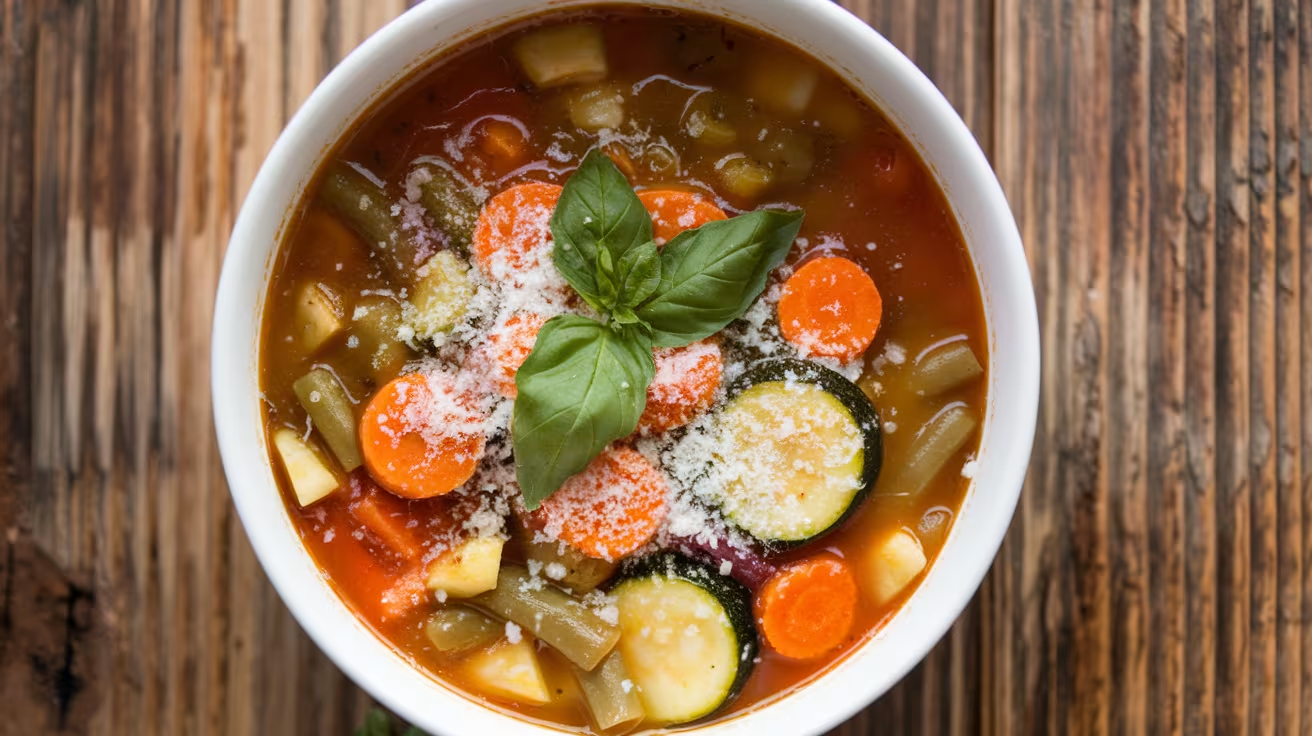When winter’s grip finally loosens and the first tender spring vegetables appear at the farmers market, something in me awakens. That’s exactly what happened last April when I stumbled upon bunches of delicate asparagus, baby peas still in their pods, and the first whispers of fresh herbs. My fingers tingled with anticipation as I filled my basket, but I had no concrete plan until rain clouds gathered overhead.
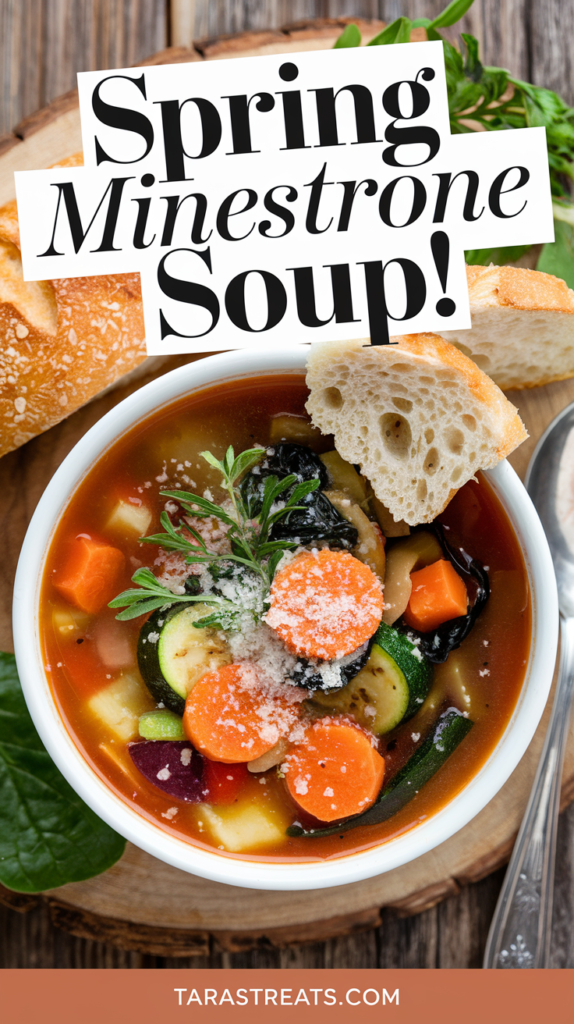
There’s something about a light spring rain that calls for soup, but not the heavy, stick-to-your-ribs variety that got us through winter. No, spring demands something brighter, fresher – a celebration in a bowl. I remembered my nonna’s minestrone, always adapting to the seasons, and knew immediately what these treasures were destined to become: a Green Minestrone that would honor spring’s fleeting abundance.
What began as a simple rainy day experiment has become my most requested recipe each spring. Friends now text me when they spot the first asparagus or spring onions, asking if “that soup” is on my weekend menu. This Spring Minestrone Soup bridges the gap between winter and summer – light enough for warming days but comforting enough for those lingering cool evenings that remind us that nature transitions gradually, not overnight.
Why You’ll Love This Spring Vegetable Celebration

Nature’s Medicine Cabinet This Healthy Minestrone Soup is packed with antioxidants, vitamins, and minerals from spring vegetables at their nutritional peak. Fresh spring produce contains higher nutrient density than out-of-season vegetables, making each spoonful a delicious immune booster.
Vibrant Versatility Unlike traditional minestrone, this Spring Soup Recipe adapts to whatever looks best at your market. No asparagus? Double the peas. Found some early zucchini? Throw it in! This soup celebrates flexibility while maintaining its bright, garden-fresh personality.
Quick Comfort From chopping board to table in under 40 minutes, this soup delivers maximum flavor with minimal fuss. Perfect for weeknights when you want something nourishing but don’t have hours to spend in the kitchen.

Batch-Cooking Champion This Vegetable Minestrone Soup tastes even better the next day as flavors meld overnight. Make a double batch on Sunday for easy lunches throughout the week – just add a fresh herb garnish to brighten each serving.
All-Season Potential Though designed as a Healthy Spring Soup Recipe, this template works beautifully year-round. Summer vegetables transform it into a light Summer Minestrone, while fall root vegetables create a heartier autumn version.
Dietary Dream Naturally Vegan Minestrone Soup that satisfies everyone at the table. Gluten-free friends can enjoy it with GF pasta or extra beans, while meat-eaters won’t miss a thing thanks to the rich vegetable broth and satisfying textures.

Ingredients for the Spring Minestrone Soup
- 2 tablespoons extra virgin olive oil
- 1 large leek (white and light green parts), cleaned and thinly sliced
- 2 celery stalks, diced
- 2 medium carrots, diced
- 3 garlic cloves, minced
- 1 teaspoon fresh thyme leaves
- 6 cups vegetable broth (homemade preferred)
- 1 cup small pasta (like ditalini or small shells)
- 1 bunch asparagus, woody ends removed, cut into 1-inch pieces
- 1 cup fresh or frozen peas
- 2 cups baby spinach or tender kale
- 1 can (15 oz) cannellini beans, drained and rinsed
- 1 lemon, zest and juice
- ¼ cup fresh basil, torn
- ¼ cup fresh parsley, chopped
- 2 tablespoons nutritional yeast or grated parmesan (optional)
- Salt and freshly ground black pepper to taste
Cooking Equipment Needed:
- Large Dutch oven or heavy-bottomed pot
- Sharp chef’s knife and cutting board
- Wooden spoon or heat-resistant spatula
- Microplane or zester for lemon
- Measuring cups and spoons
Cooking Instructions for the Spring Minestrone Soup Recipe
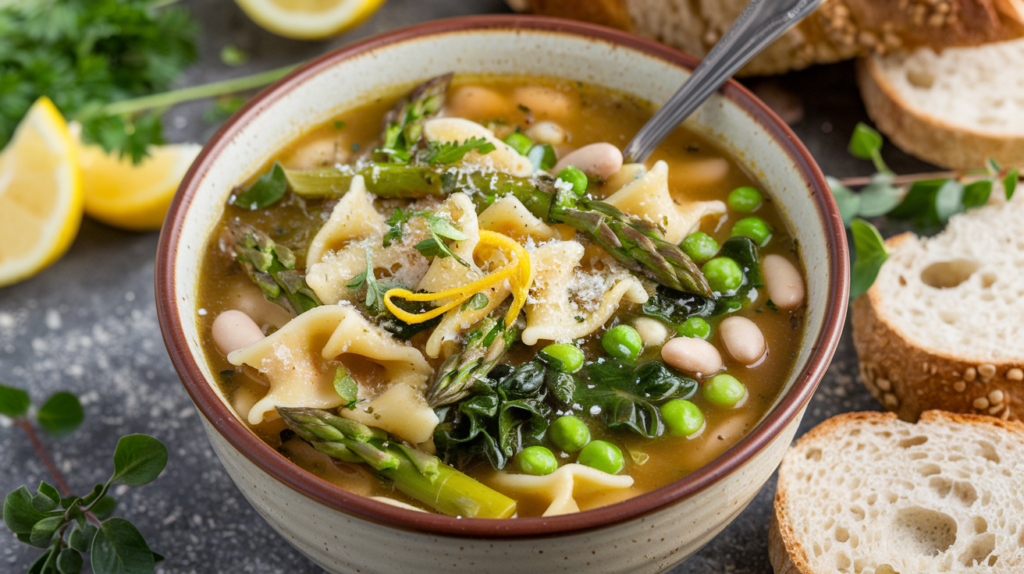
Prepare Your Aromatic Base: Heat olive oil in your Dutch oven over medium heat. Add leeks, celery, and carrots with a pinch of salt. Cook gently for 5-7 minutes until vegetables soften but don’t brown. Add garlic and thyme, cooking for another minute until fragrant.
Build Your Broth Foundation: Pour in vegetable broth and bring to a gentle simmer. This clear, flavorful liquid will become the canvas for your spring vegetables. Let this base simmer for about 5 minutes to allow flavors to meld.
Introduce the Pasta: Add your small pasta to the simmering broth. Cook for about half the time recommended on the package (it will continue cooking as you add more ingredients). This prevents mushy pasta in your finished soup.
Welcome the Spring Stars: Add asparagus pieces and cook for 2 minutes. Then add peas and cannellini beans, continuing to simmer for another 2-3 minutes until asparagus is tender-crisp. These spring vegetables should maintain their vibrant color and slight bite.
Finish with Fresh Touches: Turn off heat and stir in spinach or kale, letting the residual heat wilt the greens. Add lemon zest, juice, and most of the fresh herbs (save some for garnish). Taste and adjust seasoning with salt and pepper.
Serve with Love: Ladle into bowls and top with remaining fresh herbs, a drizzle of good olive oil, and nutritional yeast or parmesan if using. A slice of crusty bread on the side completes this spring celebration.
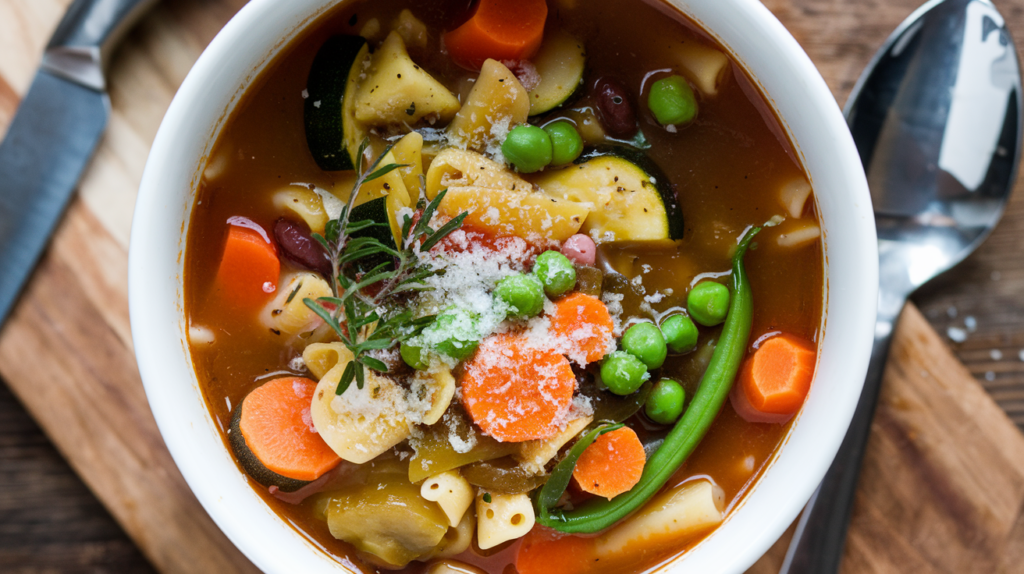
Notes:
Make-Ahead Magic Prepare through step 4, excluding pasta. Refrigerate base and cook pasta separately when reheating.
Seasonal Swaps Replace asparagus with green beans in summer or snow peas in late spring.
Protein Boost Add white beans or chickpeas for extra protein in this Vegetarian Minestrone Soup.
Broth Matters Use homemade vegetable stock for the cleanest, brightest spring flavor.
Pasta Pointers Small shapes work best; whole grain adds fiber and nutty flavor.
Macronutrients Per Serving:
- Calories: 275
- Carbohydrates: 42g
- Protein: 12g
- Fat: 7g
- Fiber: 8g
- Sugar: 6g
- Sodium: 480mg

Pro Tips for Perfect Spring Minestrone
Mind Your Timing Add vegetables in stages based on cooking time – harder vegetables first, delicate ones last. This ensures nothing overcooks while maintaining vibrant colors.
Herb Intelligence Add woody herbs (thyme, rosemary) early with aromatics. Save leafy herbs (basil, parsley) for the finish to preserve their bright flavors and aromas.
Go Beyond Basic For deeper flavor, add a parmesan rind to your broth as it simmers. Remove before serving or leave as a treasured find for someone’s bowl.
Oil Finale Finish each bowl with a drizzle of your best olive oil. This final touch adds richness and brings all the flavors into harmony.
Storage Strategy If planning leftovers, consider cooking pasta separately and adding to individual servings to prevent it absorbing all the broth overnight.
Bread Companion Serve with garlic-rubbed toasted bread for the ultimate soup experience. The crisp texture contrasts beautifully with the soup’s tenderness.
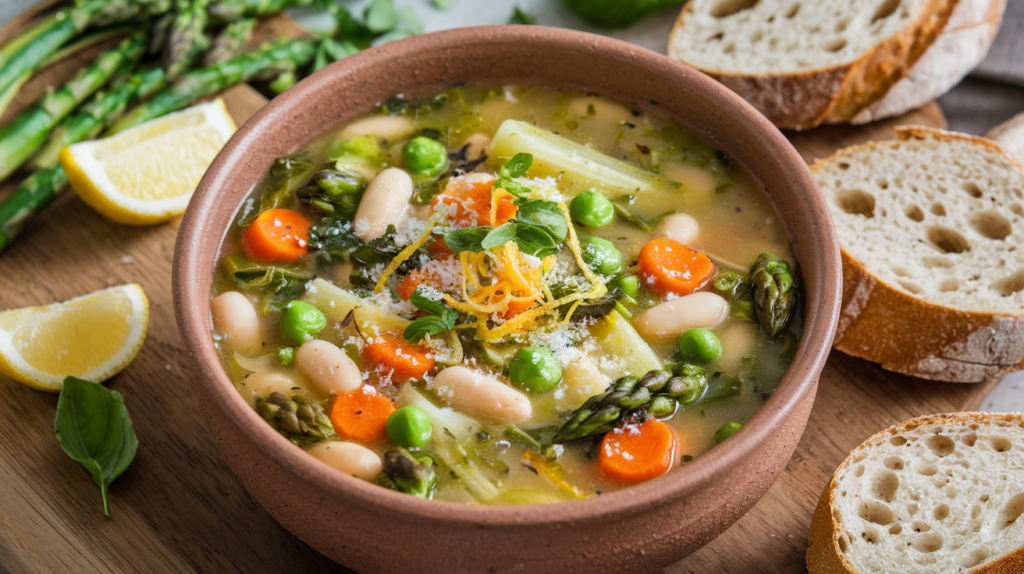
Souper Questions (Frequently Asked Curiosities)
Can I make this ahead for a dinner party? Absolutely! Prepare the base a day ahead, then add the delicate spring vegetables and herbs just before serving. The flavors actually improve overnight.
How can I make this more substantial? Add an extra can of beans, serve over a scoop of cooked farro or quinoa, or top with a soft-poached egg for non-vegan eaters.
What if I can’t find fresh spring vegetables? Frozen peas and green beans work beautifully. For asparagus, substitute with broccoli florets or zucchini when unavailable.
Can I freeze this soup? Freeze the base without pasta, greens, or herbs. Add these fresh elements after thawing and reheating for best texture and flavor.
What sides pair well with this? A simple arugula salad with lemon dressing, crusty whole grain bread, or avocado toast makes this soup a complete meal.

